
Old Manali: The Serene Village Retreat in the Himalayas
Discover Old Manali: A tranquil Himalayan sanctuary filled with lush landscapes, rich culture, and adventure opportunities, perfect for a peaceful yet exciting getaway.
Nestled in the scenic hills of the Indian Himalayas, Old Manali offers a tranquil escape from the hustle and bustle of modern life. This charming neighbourhood, situated just above the main town of Manali, is renowned for its lush greenery, quaint wooden houses, and a laid-back atmosphere that entices travelers seeking peace and natural beauty. The sound of the Beas River flowing nearby adds to the serene ambiance, making it an ideal spot for relaxation and rejuvenation. Old Manali is steeped in history and culture, with ancient temples such as the Manu Temple adding a spiritual dimension to the area. The cobblestone paths lined with traditional Himachali architecture lead you through a world that feels both timeless and welcoming. The local cafes and eateries serve a delightful mix of local and international cuisine, making it a haven for foodies. From Israeli hummus to traditional Himachali dishes, the culinary experience here is as diverse as it is delicious. Adventure enthusiasts will find plenty to keep them occupied, with opportunities for trekking, river rafting, and paragliding in the surrounding areas. The lush apple orchards and pine forests provide a perfect backdrop for leisurely walks and photography. Whether you are here for a spiritual retreat, a gastronomic adventure, or an adrenaline rush, Old Manali promises an unforgettable experience.
Local tips in Old Manali
- Visit Manu Temple early in the morning to avoid the crowds and enjoy the peaceful surroundings.
- Carry cash, as many local shops and cafes do not accept cards.
- Try the local apple cider, a specialty of the region.
- Wear comfortable walking shoes, as the cobblestone paths can be uneven.
- Check the weather forecast before planning outdoor activities, as the weather can change rapidly in the mountains.
Old Manali: The Serene Village Retreat in the Himalayas
Nestled in the scenic hills of the Indian Himalayas, Old Manali offers a tranquil escape from the hustle and bustle of modern life. This charming neighbourhood, situated just above the main town of Manali, is renowned for its lush greenery, quaint wooden houses, and a laid-back atmosphere that entices travelers seeking peace and natural beauty. The sound of the Beas River flowing nearby adds to the serene ambiance, making it an ideal spot for relaxation and rejuvenation. Old Manali is steeped in history and culture, with ancient temples such as the Manu Temple adding a spiritual dimension to the area. The cobblestone paths lined with traditional Himachali architecture lead you through a world that feels both timeless and welcoming. The local cafes and eateries serve a delightful mix of local and international cuisine, making it a haven for foodies. From Israeli hummus to traditional Himachali dishes, the culinary experience here is as diverse as it is delicious. Adventure enthusiasts will find plenty to keep them occupied, with opportunities for trekking, river rafting, and paragliding in the surrounding areas. The lush apple orchards and pine forests provide a perfect backdrop for leisurely walks and photography. Whether you are here for a spiritual retreat, a gastronomic adventure, or an adrenaline rush, Old Manali promises an unforgettable experience.
Iconic landmarks you can’t miss
Hadimba Devi Temple
Discover the enchanting Hadimba Devi Temple in Manali, a serene blend of spirituality and nature amidst the majestic Himalayas.

Mall Road Market Manali
Discover the lively Mall Road Market in Manali, where shopping, dining, and stunning views come together in a vibrant tourist hotspot.

Jogini Falls
Experience the breathtaking beauty of Jogini Falls, a serene hiking destination in Himachal Pradesh, perfect for nature lovers and adventure seekers alike.

Nehru Kund
Discover the tranquility of Nehru Kund, a stunning natural spring in Himachal Pradesh, perfect for relaxation and adventure amidst breathtaking landscapes.

Manu Temple, Old Manali
Embrace serenity at Manu Temple in Old Manali, a sacred haven surrounded by majestic Himalayan landscapes.

Manali Bazaar
Explore Manali Bazaar, a vibrant market in Himachal Pradesh filled with local handicrafts, delicious street food, and a lively cultural atmosphere.

Zostel Old Manali
Discover the vibrant backpacker culture at Zostel Old Manali, your gateway to adventure in the stunning Himalayas.

Old Manali Bridge
Discover the breathtaking views and serene atmosphere of Old Manali Bridge, a must-visit destination for nature lovers and adventure seekers alike.
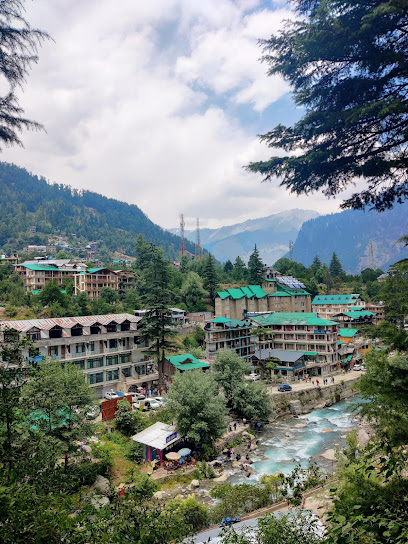
Museum of Himachal Culture & Folk Art
Immerse yourself in the vibrant culture and artistic heritage of Himachal Pradesh at the Museum of Himachal Culture & Folk Art in Manali.

Orchards House - The Hidden Tribe
Experience the enchanting charm of Old Manali at Orchards House, where comfort meets adventure in the heart of Himachal Pradesh.

Old Manali snow point
Discover the breathtaking beauty of Old Manali Snow Point, a serene Himalayan paradise perfect for adventure and relaxation.

Ghatotkach Tree Temple
Discover the tranquility of Ghatotkach Tree Temple in Manali, a unique Hindu temple surrounded by nature's beauty and rich cultural heritage.

Whiteland holidays
Discover the tranquility of Whiteland Holidays, a serene Hindu temple in Manali, surrounded by the majestic beauty of the Himalayas.
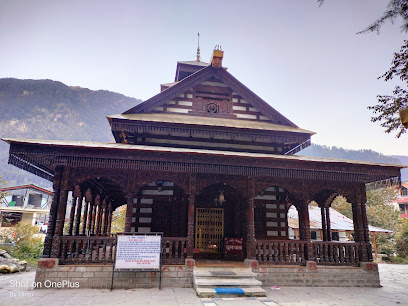
Manali wildlife sanctuary
Explore the breathtaking landscapes and rich biodiversity of Manali Wildlife Sanctuary in Himachal Pradesh, a must-visit for nature enthusiasts and adventure seekers.

Kharma valley
Explore Kharma Valley, a serene haven in Old Manali, surrounded by majestic mountains and vibrant nature, perfect for adventure and relaxation.

Unmissable attractions to see
Manali Bazaar
Discover the essence of Himachal Pradesh at Manali Bazaar, a vibrant market filled with local crafts, delicious food, and stunning views.

Old Manali snow point
Explore the enchanting beauty of Old Manali Snow Point, a serene escape in the Himalayas with breathtaking views and adventurous activities.

Kharma valley
Explore the untouched beauty of Kharma Valley in Himachal Pradesh, where adventure meets tranquility amidst breathtaking landscapes.

Hadimba Himachal Park
Explore the enchanting Hadimba Himachal Park in Manali, a national forest combining breathtaking nature with rich cultural heritage.
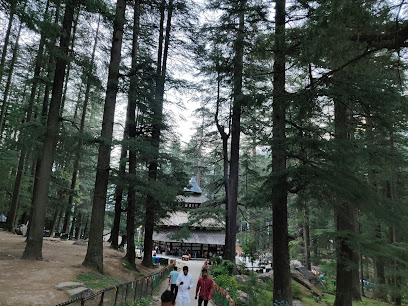
Essential places to dine
Cafe 1947
Discover Cafe 1947: where delectable Italian cuisine meets breathtaking Himalayan vistas in Manali.

Taste of India, Manali | Indian Restaurant in Manali | Best Cafe in Manali | Indian Food Takeaway
Experience the vibrant flavors of India at Taste of India in Manali - where culinary excellence meets breathtaking Himalayan views.

The Corner House Restaurant & Bar
Experience culinary excellence at The Corner House Restaurant & Bar in Manali – where diverse flavors meet breathtaking views.

Rocky's Cafe
Experience delightful dining at Rocky's Cafe in Old Manali - where local flavors meet international cuisine amidst breathtaking Himalayan views.

Cafe Del 37
Discover family-friendly dining at Café Del 37 in Old Manali—where delightful flavors meet stunning mountain views.

Flydining Manali
Experience dining like never before at Flydining Manali - where culinary excellence meets breathtaking views.

Cafe Live
Experience delicious Indian and Italian cuisine at Cafe Live in Old Manali while enjoying live music in a cozy atmosphere.

Foodie Forest Manali || Full Night Food Delivery
Experience culinary excellence at Foodie Forest Manali - where local flavors meet global cuisine in a stunning mountain setting.

Come a Napoli Pizzeria
Discover authentic Italian cuisine at Come a Napoli Pizzeria in Old Manali - where every dish tells a story.

Ocho Kitchen Best River side Cafe/Best food &Drink/Best Restaurant Manali
Experience delightful Indian and international cuisine at Ocho Kitchen by the riverside in Old Manali - where every meal is accompanied by stunning views.

Fox Den Manali
Experience exquisite barbecue and vibrant nightlife at Fox Den Manali – your ultimate dining destination in Old Manali's stunning landscape.

Markets, malls and hidden boutiques
Old manali
Experience the enchanting beauty and vibrant embroidery culture of Old Manali, a hidden gem in the Himalayas.

KOJA (Manali Store)
Explore KOJA, the premier gift shop in Manali, offering unique souvenirs and handcrafted treasures that embody Himachal Pradesh's rich culture.

THE EVIL EYE
Explore The Evil Eye in Manali for unique handcrafted gifts and souvenirs that embody the spirit of the Himalayas.
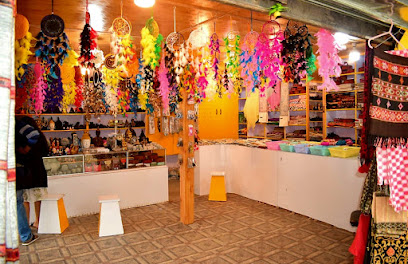
Riya Emporium
Explore the vibrant fashion scene at Riya Emporium, where local craftsmanship meets contemporary style in the heart of Manali.

Tarun Wool Store
Explore Tarun Wool Store in Old Manali for exquisite woolen clothing and handicrafts that capture the essence of Himachal Pradesh.
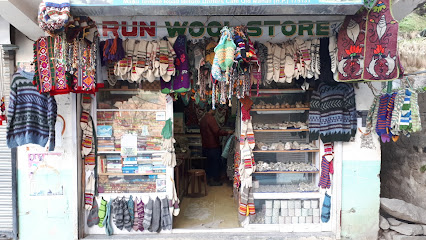
Rudra hand craft and clothing
Explore Rudra hand craft and clothing in Old Manali for unique handmade garments that showcase the rich culture and artistry of Himachal Pradesh.

Himalayan Owl
Explore Himalayan Owl in Old Manali for unique clothing that embodies the spirit of the Himalayas, blending tradition with contemporary style.

Snow Land Handicrafts
Explore the charm of Snow Land Handicrafts in Old Manali, where traditional craftsmanship meets contemporary style in clothing.
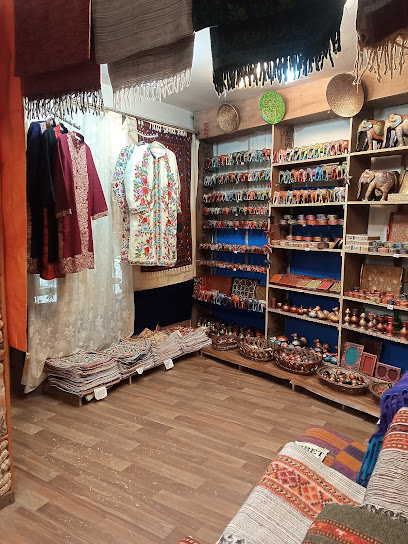
Jai Durga Handloom handicraft Emporium
Explore the artistry of Himachal Pradesh at Jai Durga Handloom Handicraft Emporium, where tradition meets contemporary style in exquisite textiles.

Little Souvenir Shop
Discover unique gifts and local craftsmanship at the Little Souvenir Shop in Old Manali, a treasure trove of Himachal Pradesh's artistry.

Essential bars & hidden hideouts
Explosion NightClub
Unleash your nightlife spirit at Explosion NightClub, the heartbeat of Manali's evening entertainment with fantastic music, delicious food, and vibrant atmosphere.

Flydining Manali
Experience unparalleled aerial dining at Flydining Manali, where exquisite cuisine meets breathtaking Himalayan views.

Johnson Bar and Restaurant
Experience the flavors of Himachal Pradesh at Johnson Bar and Restaurant in Manali, where great food meets live music in a stunning setting.

Cafe Live
Discover Cafe Live in Old Manali, a delightful restaurant blending Indian and Italian cuisine with live music in a vibrant setting.

Rendez-Vous
Discover the flavors of Old Manali at Rendez-Vous, where grilled delicacies meet breathtaking scenery in a cozy atmosphere.

Rendez-Vous Bar & Restaurant
Discover Himalayan cuisine at Rendez-Vous Bar & Restaurant, a grill paradise in Old Manali, offering stunning views and unforgettable flavors.
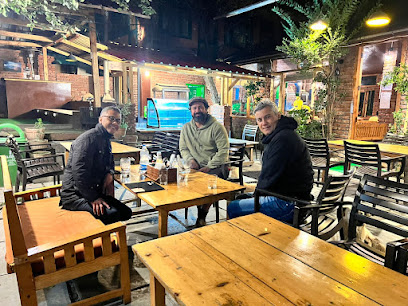
Backyard Cafe- Best Cafe in Manali
Experience the perfect blend of culinary delight and live music at Backyard Cafe, Manali's top destination for food lovers.

Drifters' Inn & Cafe- BAR Restaurant in Manu Temple Road Manali
Experience the delightful blend of local flavors and warm hospitality at Drifters' Inn & Cafe, a must-visit in scenic Manali.

Ibex Lounge Bar & Restaurant - Best Live Music Bar/Food and Drinks Bar/Hookah Bar/Best Bar in Manali
Discover the perfect blend of live music, culinary delights, and a vibrant atmosphere at Ibex Lounge Bar & Restaurant in Manali.

Winterfield Cafe & lounge - Cafe / Best Food and Drinks /Best Restro-Bar/Best Restaurant Manali
Experience the charm of Winterfield Cafe & Lounge in Old Manali, where delightful flavors meet a cozy atmosphere, perfect for every traveler.

Cafe 1987
Discover Cafe 1987 in Old Manali: A cozy cafe blending traditional charm with a lively atmosphere, perfect for relaxation and socializing.

G.O.A.T. (Greatest Of All Time) Cafe, Lounge, Microbrewery
Discover the vibrant G.O.A.T. Cafe in Old Manali, where craft brews and a lively atmosphere create unforgettable experiences.

MoonShine restaurant
Experience the vibrant atmosphere and diverse drink selection at MoonShine, a cozy bar in Old Manali, perfect for unwinding after exploring the Himalayas.

Olive Garden A family Restaurant
Discover the heart of Old Manali at Olive Garden, where delightful flavors and a cozy atmosphere create unforgettable dining experiences.

Local Phrases
-
- Helloनमस्ते
[Namaste] - Goodbyeअलविदा
[Alvida] - Yesहाँ
[Haan] - Noनहीं
[Nahi] - Please/You're welcomeकृपया
[Kripaya] - Thank youधन्यवाद
[Dhanyavaad] - Excuse me/Sorryक्षमा कीजिए
[Kshama kiijiye] - How are you?आप कैसे हैं?
[Aap kaise hain?] - Fine. And you?ठीक हूँ। आप?
[Theek hoon. Aap?] - Do you speak English?क्या आप अंग्रेज़ी बोलते हैं?
[Kya aap angrezi bolte hain?] - I don't understandमुझे समझ में नहीं आया
[Mujhe samajh mein nahi aaya]
- Helloनमस्ते
-
- I'd like to see the menu, pleaseकृपया मेनू दिखाइए
[Kripaya menu dikhaiye] - I don't eat meatमैं मांस नहीं खाता
[Main maans nahi khata] - Cheers!चियर्स!
[Cheers!] - I would like to pay, pleaseकृपया मुझे भुक्तान करने दीजिए
[Kripaya mujhe bhuktan karne dijiye]
- I'd like to see the menu, pleaseकृपया मेनू दिखाइए
-
- Help!मदद!
[Madad!] - Go away!चले जाओ!
[Chale jao!] - Call the Police!पुलिस को बुलाओ!
[Police ko bulaao!] - Call a doctor!डॉक्टर को बुलाओ!
[Doctor ko bulaao!] - I'm lostमैं खो गया/गई हूँ
[Main kho gaya/gayi hoon] - I'm illमुझे बीमारी है
[Mujhe bimari hai]
- Help!मदद!
-
- I'd like to buy...मैं ... खरीदना चाहूँगा/गी
[Main ... khareedna chaahunga/chaahungi] - I'm just lookingमैं सिर्फ देख रहा/रही हूँ
[Main sirf dekh raha/rahi hoon] - How much is it?यह कितने का है?
[Yeh kitne ka hai?] - That's too expensiveयह बहुत महंगा है
[Yeh bahut mehnga hai] - Can you lower the price?क्या आप कीमत कम कर सकते हैं?
[Kya aap keemat kam kar sakte hain?]
- I'd like to buy...मैं ... खरीदना चाहूँगा/गी
-
- What time is it?अभी कितने बजे हैं?
[Abhi kitne baje hain?] - It's one o'clockएक बजे हैं
[Ek baje hain] - Half past (10)दस बजे तकरीबन
[Das baje takreeban] - Morningसुबह
[Subah] - Afternoonदोपहर
[Dopahar] - Eveningशाम
[Shaam] - Yesterdayकल
[Kal] - Todayआज
[Aaj] - Tomorrowकल
[Kal] - 1एक
[Ek] - 2दो
[Do] - 3तीन
[Teen] - 4चार
[Char] - 5पांच
[Paanch] - 6छह
[Chhah] - 7सात
[Saath] - 8आठ
[Aath] - 9नौ
[Nau] - 10दस
[Das]
- What time is it?अभी कितने बजे हैं?
-
- Where's a/the...?... कहाँ है?
[... kahan hai?] - What's the address?पता क्या है?
[Pata kya hai?] - Can you show me (on the map)?क्या आप मुझे दिखा सकते हैं (नक्शे पर)?
[Kya aap mujhe dikhha sakte hain (naksha par)?] - When's the next (bus)?अगली (बस) कब है?
[Agli (bus) kab hai?] - A ticket (to ....)एक टिकट (.... के लिए)
[Ek ticket (.... ke liye)]
- Where's a/the...?... कहाँ है?
History of Old Manali
-
Old Manali is steeped in myth and legend, with its roots tracing back to the time of the sage Manu, who is believed to have established the area as a sacred site. According to Hindu mythology, this is where Manu created the human race after a great flood, making Old Manali a significant pilgrimage destination for those seeking spiritual solace.
-
In the 1960s, Old Manali became a haven for Tibetan refugees fleeing Chinese rule. This influx introduced vibrant Tibetan culture, evident in the architecture, cuisine, and festivals celebrated in the area. The presence of monasteries, such as the Gadhan Thekchhokling Monastery, reflects this cultural blend, providing insights into the spiritual practices of Tibetan Buddhism.
-
During the British colonial period in the 19th century, Manali gained recognition as a summer retreat for British officials. Old Manali, with its picturesque landscapes and cooler climate, became a favored location for building colonial-era bungalows. This period saw the introduction of modern amenities and infrastructure, which laid the groundwork for tourism in the region.
-
After India gained independence in 1947, Old Manali began to develop as a tourist destination. The government recognized its potential and initiated various development projects, including improved connectivity and infrastructure. This era marked the beginning of Old Manali's transformation into a popular hub for backpackers and adventure seekers.
-
Today, Old Manali is a vibrant blend of traditional Himachali culture and global influences. The area hosts numerous cafes, shops, and art galleries, attracting a diverse range of visitors. Festivals like the Hadimba Devi Fair celebrate local traditions, while the growing popularity of yoga and wellness retreats showcases the area's evolving cultural landscape.
Old Manali Essentials
-
Old Manali is accessible from various parts of Manali. If you are coming from the main Manali bus station, you can take a local taxi or auto-rickshaw, which takes about 10-15 minutes. Alternatively, you can walk, as it's only about 3 kilometers away, offering a scenic route along the river. For those arriving from Kullu Airport, approximately 50 kilometers away, taxis are available to take you directly to Old Manali.
-
Old Manali is a compact area and can be easily explored on foot. For longer distances, local taxis and auto-rickshaws are readily available. Bicycles can also be rented from local shops for a more adventurous way to explore the surroundings. Public buses connect Old Manali to other parts of the town, but they are less frequent.
-
Old Manali is generally safe for tourists, but it is advisable to remain vigilant, especially in crowded areas. Petty crimes, such as pickpocketing, can occur. Avoid wandering alone in poorly lit areas at night. While there aren't specific high-crime areas targeting tourists, it's wise to keep an eye on your belongings and be cautious around busy markets.
-
In case of an emergency, dial 112 for police, ambulance, or fire services. The nearest hospital is located in Manali town, accessible by taxi. It is advisable to have travel insurance that covers medical emergencies. For minor health issues, pharmacies are available in Old Manali for over-the-counter medications.
-
Fashion: Do dress modestly, especially in temples and local markets. Avoid revealing clothing. Religion: Do respect local customs; cover your head when entering temples. Public Transport: Do be polite and offer your seat to the elderly. Don't eat or drink on public buses. Greetings: Do greet people with a smile and a nod; a handshake is common among acquaintances. Eating & Drinking: Do try local cuisine; don't waste food as it is considered disrespectful.
-
To experience Old Manali like a local, visit the local cafes and eateries to sample traditional Himachali cuisine. Engage with local artisans selling handwoven crafts and souvenirs. Explore the hidden trails and scenic spots around the village for a peaceful escape. Don't miss the vibrant local market, especially during the evening when it comes alive with street food and local music.
Trending Landmarks in Old Manali
-
Hadimba Devi Temple
-
Mall Road Market Manali
-
Jogini Falls
-
Nehru Kund
-
Manu Temple, Old Manali
-
Manali Bazaar
-
Zostel Old Manali
-
Old Manali Bridge
-
Museum of Himachal Culture & Folk Art
-
Orchards House - The Hidden Tribe
-
Old Manali snow point
-
Ghatotkach Tree Temple
-
Whiteland holidays
-
Manali wildlife sanctuary
-
Kharma valley
Nearby Cities to Old Manali
-
Things To Do in Shimla
-
Things To Do in Leh
-
Things To Do in Jammu
-
Things To Do in Amritsar
-
Things To Do in Sialkot
-
Things To Do in Rishikesh
-
Things To Do in Lahore
-
Things To Do in Gujranwala
-
Things To Do in Skardu
-
Things To Do in Faisalabad
-
Things To Do in Delhi
-
Things To Do in Murree
-
Things To Do in Rawalpindi
-
Things To Do in Islamabad
-
Things To Do in Abbottabad









